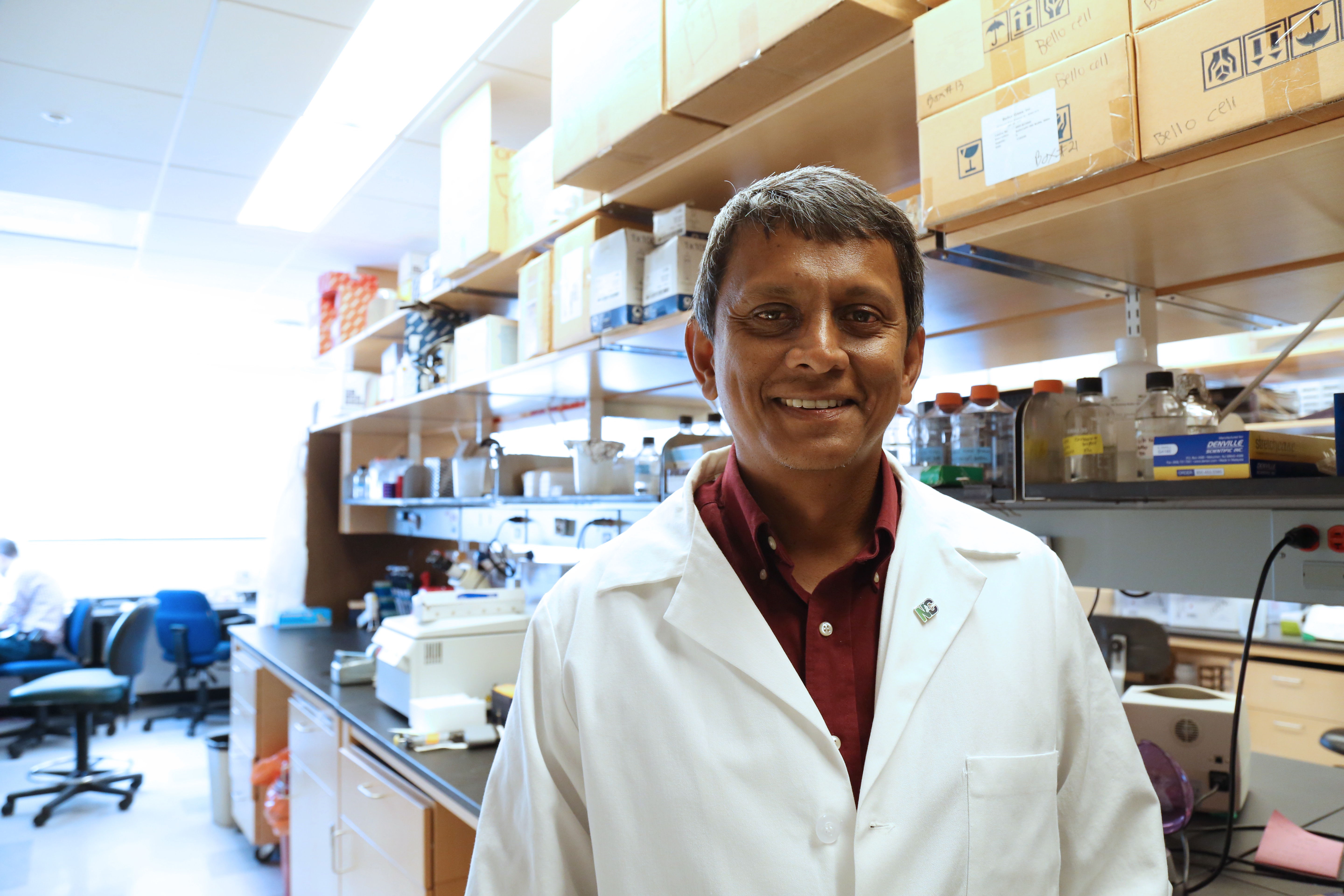
Aravinda de Silva, PhD. Image: Max Englund, UNC School of Medicine/UNC Health Care
Scientists at the UNC School of Medicine are working to develop a nanoparticle vaccine to protect against the four serotypes of dengue virus, which infects more than 350 million people across the globe each year.
Aravinda de Silva, PhD, professor of microbiology and immunology, and a post-doctoral researcher Stefan Metz, PhD, recently published the latest on their vaccine development efforts in PLOS Neglected Tropical Diseases.
The nanoparticle platform was produced with PRINT (Particle Replication in Non-wetting Templates) technology. Joseph DeSimone, PhD, the Chancellor’s Eminent Professor of Chemistry and a joint professor in the Department of Pharmacology at UNC, developed PRINT, a nano-molding technique, in 2004.
Rather than using a killed or attenuated virus to develop a vaccine for dengue, de Silva’s lab is focusing on “expressing the E protein and attaching it to nanoparticles to induce good immune responses,” Metz says.
The nanoparticle vaccine platform can be safer to certain populations than vaccines that use either live or killed virus, he says.
One of the many complexities about developing a successful dengue vaccine, Metz explains, is that there are four serotypes of the virus, which means researchers need to develop a vaccine that provides immunity against all four serotypes.
“There are currently several vaccines in trial and development for dengue,” Metz says. “One vaccine has gone through all three clinical trial phases and has been licensed in some countries. Although these vaccines produce good antibody responses, a large part of the population still wasn’t protected from each of the serotypes.
“With dengue, you need to vaccinate people against all four serotypes at once in order to protect people. That’s why we’re combing the different serotypes.”
In their most recent study, de Silva and Metz focused their efforts on the second serotype. Now, they’re moving forward with the same studies for serotypes one, three and four.
“In the study, we express the E protein, which is found on the surface of the virus particle,” Metz explains. “This protein is organized in a very complex way, and this complex organization exposes isotopes that are important to induce protective immune response.”
De Silva and Metz were recently named to a global research consortium to tackle Zika, and they’re using the same nanoparticle vaccine platform as they work to develop a Zika vaccine.
“Globally, if you look at the numbers, dengue is still a much bigger problem than Zika,” Metz says, noting that an estimated 25,000 people die from dengue infections each year. “If you get dengue, you might not even notice it. If you do get clinical symptoms during a first infection of dengue, you might feel like you have a feverish flu. A lot of people don’t even know it because if you’re not feeling well for a couple days, you don’t necessarily think that it’s caused by a dengue virus infection.
“However, if you were infected by the first serotype and you had a secondary infection with a different serotype, that’s when the more severe diseases can come up — stress syndromes, hemorrhagic diseases — those can be fatal diseases,” Metz says. “There are thousands and thousands of people dying from those diseases each year.”
Source: UNC School of Medicine




